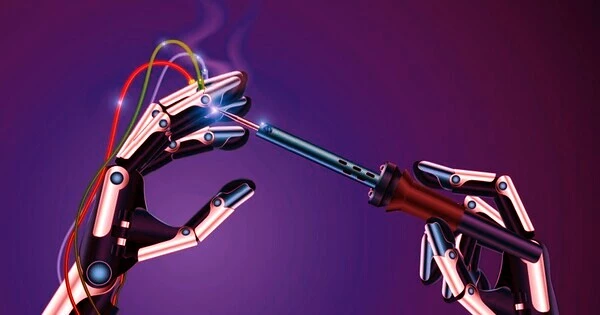Engineers in the discipline have been developing several models of flexible robots helpful in exploration, mobility, rehabilitation, and even space since the term “soft robotics” was coined in 2008. The method in which animals move in the wild is one source of inspiration.
This has been advanced by a team of MIT researchers who created SoftZoo, a bio-inspired platform that enables engineers to examine soft robot co-design. The framework improves how users automatically produce designs for possible machines by optimizing the algorithms that make up design, which decides how the robot will appear, and control, or the system that permits robotic mobility.
The platform includes 3-D representations of creatures including panda bears, fish, sharks, and caterpillars as designs that may emulate soft robotics actions like locomotion, nimble turning, and path following in various surroundings. The platform illustrates the performance trade-offs of several designs in diverse terrains, whether by snow, desert, clay, or water.
Tsun-Hsuan Wang, a student at MIT and a member of the Computer Science and Artificial Intelligence Laboratory (CSAIL), is the project’s lead researcher. “Our framework can help users find the best configuration for a robot’s shape, allowing them to design soft robotics algorithms that can do many different things,” he says. “In essence, it helps us understand the best strategies for robots to interact with their environments.”

Because it mimics movement that reacts to the physical aspects of many biomes, SoftZoo is more thorough than similar platforms that currently simulate design and control. The framework’s adaptability stems from a differentiable multiphysics engine, which allows for the simultaneous modeling of several features of a physical system, such as a newborn seal spinning on ice or a caterpillar crawling over a wetland habitat. The engine’s differentiability improves co-design by lowering the number of costly simulations necessary to tackle computational control and design concerns. As a consequence, users may now construct and move soft robots using more complex, precise algorithms.
The relevance of morphology, a field of biology that investigates the shapes, sizes, and forms of various species, is demonstrated by the system’s capacity to mimic interactions with various terrain types. Some biological structures are better than others depending on the environment, analogous to comparing machine designs for similar jobs.
These biological patterns may lead to the development of more sophisticated artificial life. “A jellyfish’s gently undulating geometry allows it to efficiently travel across large bodies of water, inspiring researchers to develop new breeds of soft robots and opening up unlimited possibilities,” claims Wang.
“Dragonflies can also perform very agile maneuvers that other flying creatures cannot because their wings have special structures that change their center of mass when they fly.” Our framework enhances movement in the same manner that a dragonfly is inherently better at navigating its environment.”
Previously, robots struggled to handle congested settings because their bodies were not in sync with their surroundings. Designers may, however, use SoftZoo to concurrently improve the robot’s brain and body, co-optimizing both land and aquatic machinery to be more conscious and specialized. The robots would be more useful in rescue operations and exploration with greater behavioral and morphological intelligence. If a human went missing during a flood, for example, the robot might potentially navigate the waters more effectively because it was optimized utilizing SotftZoo platform approaches.
“SoftZoo provides open-source simulation for soft robot designers, allowing them to build real-world robots much more easily and flexibly while accelerating the machines’ locomotion capabilities in diverse environments,” says study co-author Chuang Gan, who will soon be an assistant professor at the University of Massachusetts at Amherst.
“This computational approach to co-designing the soft robot bodies and their brains (that is, their controllers) opens the door to rapidly creating customized machines that are designed for a specific task,” says Daniela Rus, director of CSAIL and the Andrew and Erna Viterbi Professor in the MIT Department of Electrical Engineering and Computer Science (EECS).
Before building any form of robot, the framework might be used to field test unnatural settings. For example, determining how a bear-like robot acts in a desert may be difficult for a study team based in Boston’s urban plains. Soft robotics developers may instead utilize SoftZoo’s 3-D models to test alternative designs and assess how good the algorithms guiding their robots are at navigation. As a result, researchers would save time and money.
However, the constraints of existing manufacturing processes prevent these soft robot ideas from becoming a reality. “Transferring from simulation to physical robot remains unsolved and requires further study,” Wang says. “The muscle models, spatially varying stiffness, and sensorization in SoftZoo cannot be straightforwardly realized with current fabrication techniques, so we are working on these challenges.”
Given its capacity to evaluate robotic control, the platform’s inventors see uses in human mechanics, such as manipulation, in the future. Wang’s team created a 3-D arm that throws a snowball ahead to illustrate its potential. Soft robotics designers might then utilize the platform to evaluate soft robotic arms that grip, move, and stack things by integrating the simulation of more human-like jobs.
Pingchuan Ma, an EECS student, and CSAIL affiliate, Harvard University postdoc Andrew Spielberg ’21, Carnegie Mellon University student Zhou Xian, UMass Amherst Associate Professor Hao Zhang, and MIT professor of brain and cognitive sciences and CSAIL affiliate Joshua B. Tenenbaum co-authored the paper.
Wang did this work while interning at the MIT-IBM Watson AI Lab, with funding from the NSF EFRI Program, DARPA MCS Program, MIT-IBM Watson AI Lab, and gift funds from MERL, Cisco, and Amazon. This month, the study of the team will be presented at the 2023 International Conference on Learning Representations.
















